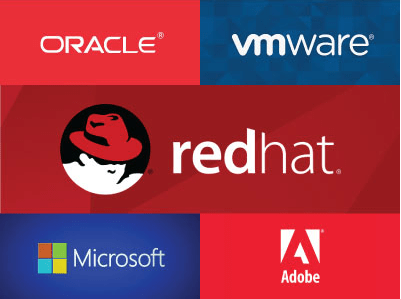Software Licensing: A legal instrument
Software Licensing: A legal instrument

A software license is a document that provides legally binding guidelines for the use and distribution of software. The software license is a legal instrument (usually by way of contract law, with or without printed material) governing the use or redistribution of software.
Software licenses typically provide end users with the right to one or more copies of the software without violating copyrights. The license also defines the responsibilities of the parties entering into the license agreement and may impose restrictions on how the software can be used. Software licensing terms and conditions usually include fair use of the software, the limitations of liability, warranties and disclaimers and protections if the software or its use infringes on the intellectual property rights of others.
The most significant effect of this form of licensing is that, if ownership of the software remains with the software publisher, then the end-user must accept the software license. In other words, without acceptance of the license, the end-user may not use the software at all. One example of such a proprietary software license is the license for Microsoft Windows. As is usually the case with proprietary software licenses, this license contains an extensive list of activities which are restricted, such as: reverse engineering, simultaneous use of the software by multiple users, and publication of benchmarks or performance tests.
Software licensing often also includes maintenance. This, usually with a term of one year, is either included or optional, but must often be bought with the software. The maintenance agreement (contract) typically contains a clause that allows the licensee to receive minor updates and sometimes major updates. This option is usually called update insurance or upgrade assurance. For a major update, the customer has to buy an upgrade, if it is not included in the maintenance agreement. For a maintenance renewal, some manufacturers charge a reinstatement fee retroactively per month, in the event that the current maintenance has expired.
There are numerous types of licensing models, varying from simple perpetual licenses and floating licenses to more advanced models such as the metered license. The most common licensing models are per single user (named user, client, node) or per user in the appropriate volume discount level, while some manufacturers accumulate existing licenses.
- These open volume license programs are typically called open license program (OLP), transactional license program (TLP), volume license program (VLP) etc. and are contrary to the contractual license program (CLP), where the customer commits to purchase a certain number of licenses over a fixed period (mostly two years).
- Licensing per concurrent/floating user also occurs, where all users in a network have access to the program, but only a specific number at the same time.
- Another license model is licensing per dongle, which allows the owner of the dongle to use the program on any computer.
- Licensing per server, CPU or points, regardless the number of users, is common practice, as well as site or company licenses. Sometimes one can choose between perpetual (permanent) and annual license.
- For perpetual licenses, one year of maintenance is often required, but maintenance (subscription) renewals are discounted.
- For annual licenses, there is no renewal; a new license must be purchased after expiration. Licensing can be host/client (or guest), mailbox, IP address, domain etc., depending on how the program is used.
- Additional users are inter alia licensed per extension pack, which includes the base pack. Some programs are modular, so one will have to buy a base product before they can use other modules.
Layots partner with the world class product companies for providing licensing for their products like oracle,vmware, red hat,Microsoft,adobe.

Oracle user based licensing is about the individuals or devices that have the ability to access the software, regardless the active usage. The main user based license nowadays is Named User Plus (NUP). This license type has been available since 2002, and is available for the majority of Oracle products.
VMware v Sphere is the leading server virtualization platform with the best foundation for your applications, your cloud and your business. v Sphere 7 is licensed on a per-processor basis. Each physical processor (CPU) in a server needs to have at least one processor license key assigned to be able to run v Sphere.
Red Hat subscription allows customers to download Red Hat tested and certified enterprise software. It also provides access to the guidance, stability, and security to confidently deploy these products, even in the most-critical environments With Red Hat subscriptions, there are no license or upgrade fees.
Microsoft Licensing is a term used by Microsoft to describe a program for organizations that need multiple Microsoft product licenses, but do not need multiple copies of the software media and the documentation that comes with the software licensing.
Adobe software license basically allows the buyer to use a program indefinitely after a single payment. Adobe only offers perpetual licenses for some desktop applications and therefore these licenses are tied to a single device. These licenses only permit the user to run the version that they are licensed for.

